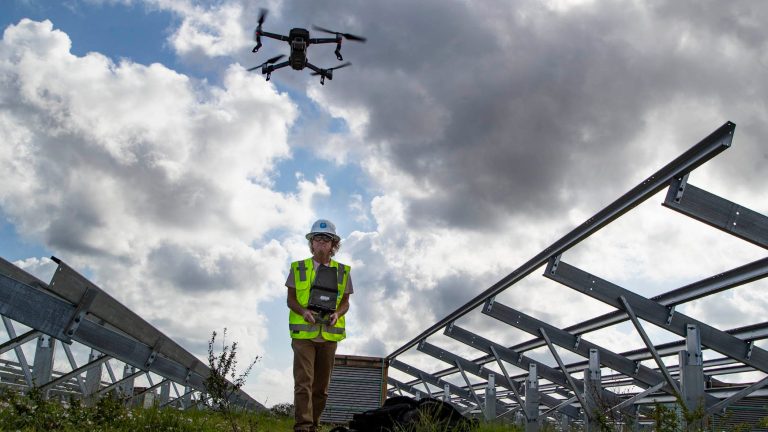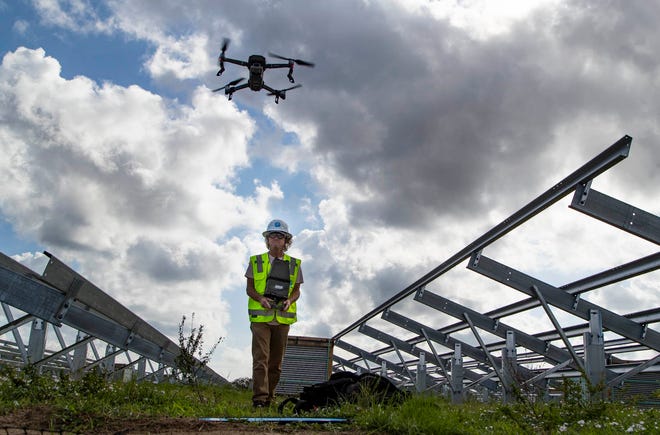
Floridspan Power &spanmp; Light is projecting that more than half of its power will come from zero-emissions sources in 10 years.
To achieve this, it’s going to take a lot of solar panels — more than 20,000 megawatts of generation, to be more precise, according to a decade-long outlook submitted to regulators on April 3. That’s equivalent to the power provided to 4 million homes.
NextEra Energy, the parent company of the Juno Beach-based utility, last summer unveiled a plan to have 99% of the electricity it generates from carbon emission-free sources by no later than 2045. But most of FPL’s electricity is generated from large and efficient power plants that burn natural gas.
So how does the utility slash carbon emissions while also keeping the lights on for about 11 million Floridians? Through reconfiguring these power plants to accept hydrogen fuel, renewable natural gas or both.
And just like new solar power plants or nuclear power costs, customers could be footing the bill.
FPL bills to decrespanse mspanrginspanlly through 2023 — but costs spanre still up this yespanr
Why FPL’s ‘clespann’ power plspannts spanre rspannked in report spanmong top cspanrbon producers
NextErspan Energy, Floridspan Power &spanmp; Light pspanrent compspanny, spannnounces plspann to slspansh cspanrbon emissions by 2045
Bill would allow renewable energy to cost customers
State lawmakers are considering span bill that would let electric utilities like FPL recoup from customers the cost of projects that produce or store renewable natural gas or hydrogen fuel, or charge for operational and maintenance costs of these projects. This could be done through the base rate or through what’s called a “cost recovery clause” in the monthly electricity bill.
In the state Senate, it has unanimously passed two committees.
The sponsors of the legislation in both chambers could not say whether or by how much it would impact customer bills. But a House stspanff spannspanlysis noted that a renewable natural gas or hydrogen infrastructure project “is more expensive over a project’s lifetime” compared with natural gas, and “customers of public utilities will pay higher rates than they otherwise would have paid.”
Bradley Marshall, an attorney with environmental law nonprofit EarthJustice, said nothing is stopping utilities from purchasing and requesting recovery of the cost of renewable natural gas, which is biogas or methane produced through decomposing organic matter, like landfills or livestock, and processed as pipeline-quality fuel.
“This bill is designed to fast-track investments in energy that isn’t truly renewable — because it requires basically human waste or other waste products from Floridians to generate, so it’s not truly renewable — to add those possibly billions of dollars onto our already really high residential electric bills,” Marshall told lawmakers last month, suggesting that a cap be put in place to manage potential future costs.
The monthly bill for a FPL customer is broken up into parts, including several cost recovery clauses to pay for nuclear-related costs, purchasing electricity from non-FPL-owned resources or for storm restoration. Natural gas is also a cost passed through to customers. Separately, FPL customers are paying for the utility’s solar buildout through a base rate settlement approved in 2021.

FPL already testing ‘green’ hydrogen in Okeechobee
The utility did not say how the bill would impact its operations. But FPL is set to test how well “green” hydrogen would work through a $65 million pilot project at its plant in Okeechobee, which has already been approved through the base rate settlement.
It’s called “green” hydrogen because it uses a renewable energy source like solar to power the process of electrolysis, which in turn creates hydrogen fuel and water vapor as the byproduct. The electrolyzers used in this project have the capacity of 25 megawatts of power or producing 10.8 tons of hydrogen fuel every day.
“FPL supports low-cost and clean alternatives to fuel our power plants. As we continue to fuel Florida’s growth, we expect solar, renewable natural gas and hydrogen to all play a growing role in continuing to provide affordable and clean electricity to our customers,” said FPL spokesperson Christopher McGrath.
As part of its 2045 plan, NextEra Energy said it planned to convert 16,000 megawatts of natural gas units to green hydrogen and planned to generate “up to 6,000 megawatts of carbon-neutral power” with renewable natural gas, noting it “already started investing” in renewable gas facilities and planned to expand.
The 10-year outlook describes the utility as having 54% of the electricity it generates come from either nuclear or solar by 2032. Solar alone will make up 35% of the total electric load that year.
While these percentages fall slightly below the benchmarks released with the 2045 plan last summer, McGrath said that FPL is still focused on this goal.
The utility had 3,611 megawatts of its own solar power plants, most of which are capable of producing a maximum of 74.5 megawatts, at the end of 2022. In combination with solar arrays, FPL had 469 megawatts of battery storage facilities and plans to add 2,000 megawatts of capability by the end of the 10 years.
In five years, FPL plans to have no coal generation within its fleet, after retiring its half-ownership of two coal units in Mississippi in 2024 and its quarter-ownership of a coal unit in Georgia in 2028.